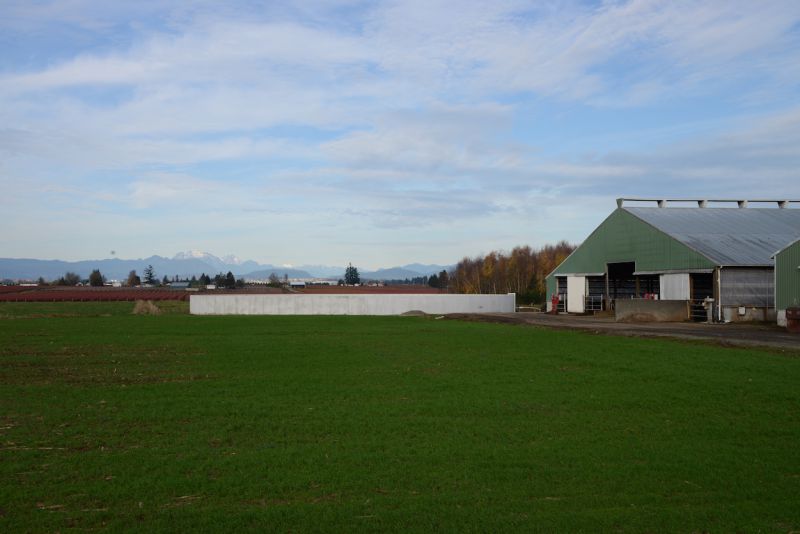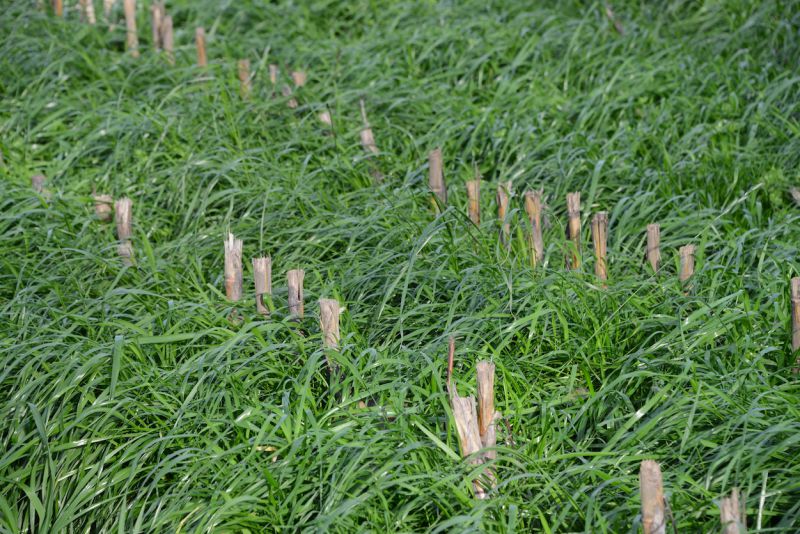Whatcom County Dairy Farmers Tackle Water Quality Challenges
Whatcom County Dairy Farmers Tackle Water Quality Challenges

ARM protects more than the creek and the commercial shellfish beds downstream—it protects the Lenssens’ bottom line.
“We got better yields on grass by at least 1.5 tons per acre on fields we were going out on earlier,” said Terry Lenssen.
To qualify to use ARM, the Lenssens worked with district staff to conduct a risk analysis, update their state-mandated nutrient management plan, and establish a monitoring program with sampling wells at one-, two- and three-foot depths. The monitoring wells indicated that using the tool helped the brothers reduce nitrate leaching, says Lenssen.
The Lenssens' 260 acres of forage crops utilize the nutrients from three to four applications of manure per year. Heavy growth and mild winter weather generally yield five cuttings per year, cycling nutrients back to their 710 cows.
The brothers also practice “relay cropping.” As they cultivate 270 acres of corn ground in early summer, they blow on 30 to 50 pounds of grass seed per acre. After the corn is harvested, a lush cover crop is already in place to protect soil from erosion, capture nutrients in the soil, and filter sediment from stormwater. The brothers apply manure, harvest the grass for forage in the spring, then plant corn again.

The Lenssens are not alone in their concern about water quality issues, said Dr. Steve Paulsen of the U.S. Environmental Protection Agency’s National Health and Environmental Effects Research Laboratory in Corvallis, Oregon. Paulsen works on EPA’s National Aquatic Resource Survey (NARS), which assesses the quality of U.S. streams, rivers, lakes, wetlands and coastal waters.
Paulsen noted that the 2016 NARS report shows 45 percent of America’s rivers and streams contain excess nutrients; in the Pacific Northwest, 31 percent of the rivers and streams are high in phosphorous and just 12 percent have excess nitrogen. Meanwhile, approximately 23 percent of the nation’s rivers and streams—including eight percent in the West—exceed thresholds for enteroccocal bacteria, which include E. coli.
“It’s exciting to see that farmers like the Lenssens are finding protection of water quality is a big plus for their operations,” Paulsen said. “As more and more farmers discover this and apply innovative strategies, we expect to see the pollution numbers found in the national surveys improve.”
Click here to download a copy of the article as it appeared in Capital Press.

